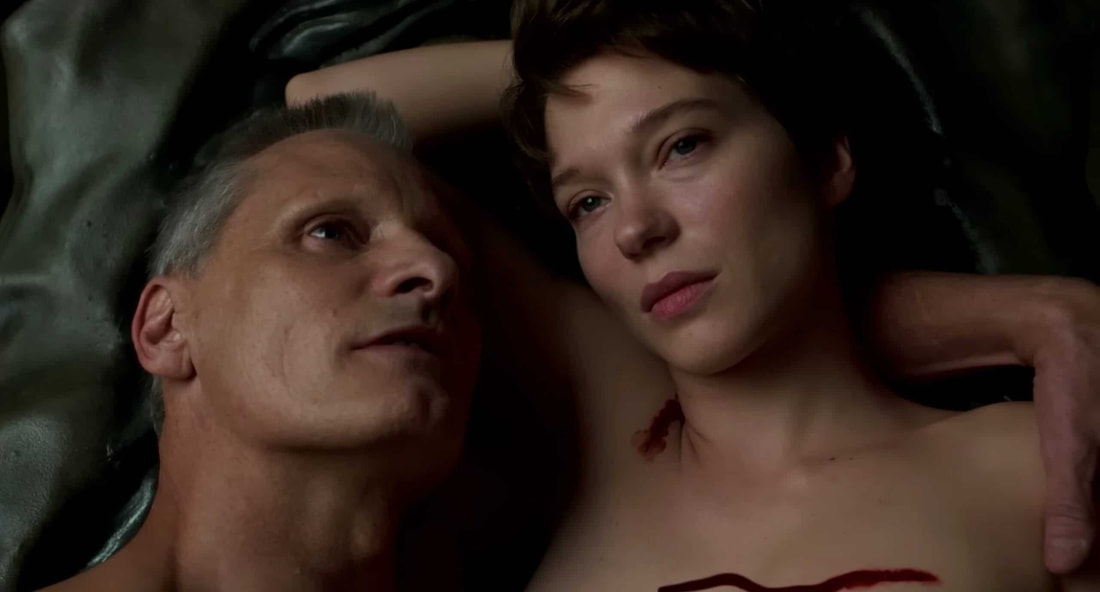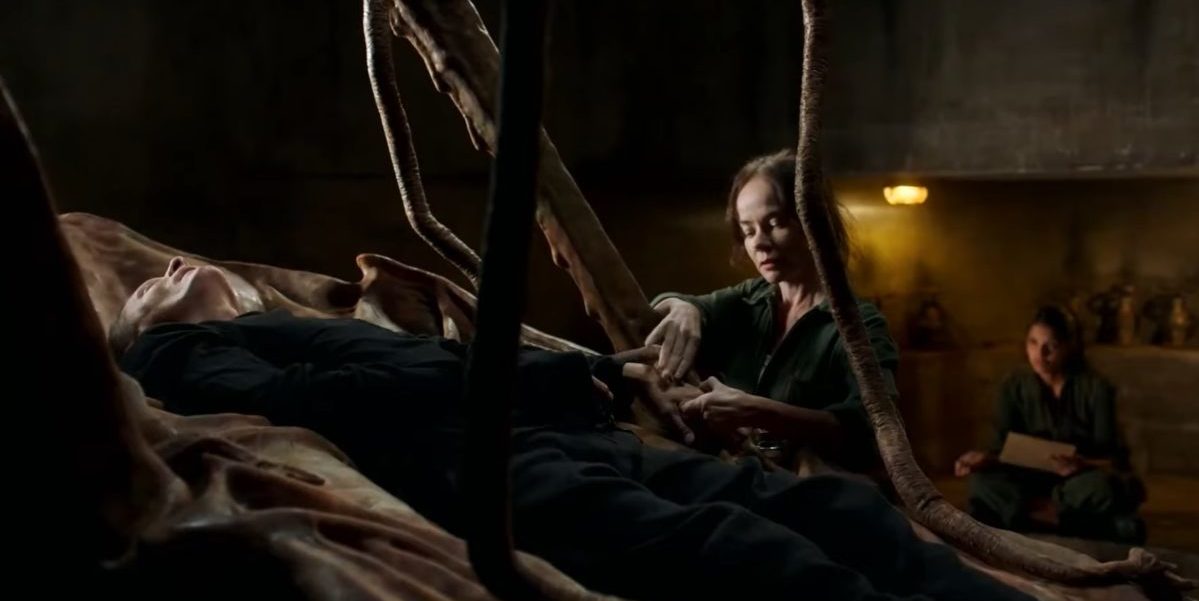|
Review by Tatiana Miranda
A mixture of bloody metaphorical sex scenes and surreal body modifications as art, David Cronenberg’s new film Crimes of the Future explores the bounds of human evolution and how we view our bodies. Loosely based on Cronenberg’s hour-long 1970 film of the same name, Crimes of the Future takes place in the not-too-distant future in a decrepit landscape filled with abnormal humans as they begin to evolve, now devoid of pain and growing seemingly useless organs. Viggo Mortensen plays the central character, Saul Tenser, a performance artist with a penchant for growing and removing organs within him. As his body faces faults regarding the growth of these organs, he starts to unravel the truth of the evolutionary process that is occurring within him.
Crimes of the Future’s plot is loose at best, as Cronenberg’s film prefers metaphor to structure. In fact, metaphors and conceptual scenes are the heart of the movie, especially since nothing is as it seems. During one scene, Kristen Stewart’s character Timlin notes that “Surgery is the new sex” after viewing Saul and his artistic partner Caprice performing an extremely erotic surgery. While this is seemingly true, with sex intertwined closely with bodily mutilation, it is among a vast list of concepts that Cronenberg attempts to portray in this movie. Along with the idea of surgery being a form of sex, the idea of the development of new organs as a form of artwork and surgery becoming performance art is also central to the actions of both Caprice and Saul. Although there is certainly an overabundance of conceptual scenes and metaphors, it pairs well with the aspects of body horror Cronenberg uses. While surgical scenes are bound to make audience members squeamish, they are undercut with explanation and an understanding of the character’s decidedly painless reactions. Even more compelling than the genre of body horror, Crimes of the Future is a semi-sci-fi/detective thriller as Saul meets with different characters in an attempt to rebel against the government and come to terms with his own changing body.
While Crimes of the Future is gritty and contemplative, it isn’t above itself, as the characters’ dialogue constantly pokes fun at the absurdity of it all. Saul chuckles to himself and tells Caprice to make sure not to spill as she performs a sexual act on his open wound. Side characters such as bureaucratic coworkers Timlin and Wippet are intense in their love and appreciation for Saul and Caprice’s artwork, almost to the point of insanity in an attempt to come into their world. Concepts in Cronenberg’s world-building, such as the Inner Beauty Contest, which Saul enters, realize the performative way humans view bodily functions in a humorous albeit depressing way.
Crimes of the Future is far from a perfect film, as it is less a movie and more a nearly two-hour-long visual metaphor regarding the fate of humanity. Although its concepts are intriguing and linger long after the credits roll, it isn’t entirely sure what point it is trying to make, much less which genre it aligns itself with. In the end, though, Crimes of the Future gives the audience some sort of relief as Saul finally allows evolution to run its course. Crimes of the Future releases in theaters on June 3. Rating: 3/5
0 Comments
Leave a Reply. |
Archives
July 2024
Authors
All
|
|
|
disappointment media
Dedicated to unique and diverse perspectives on cinema! |


